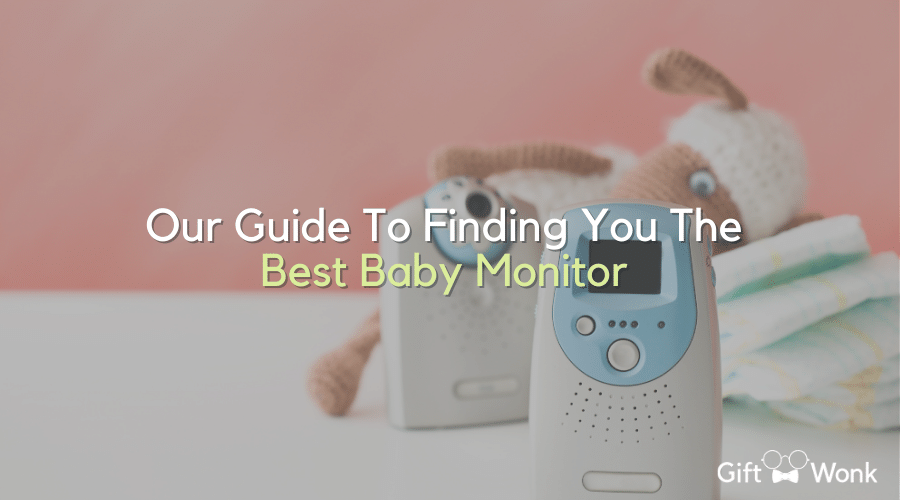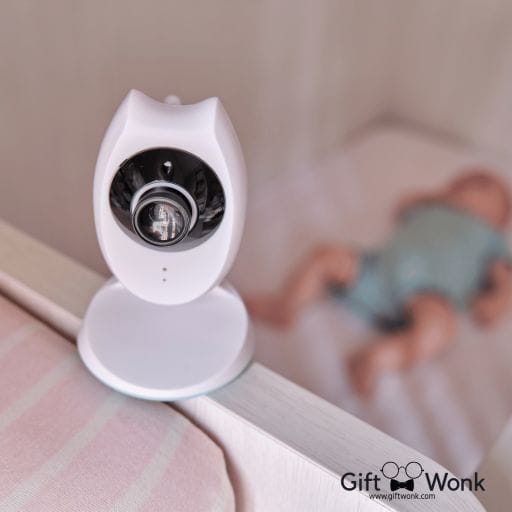
!! DISCLAIMER !! This site may contain Amazon & other affiliate links.
This means if you click on one of the product recommendation links, this site may receive a small commission. This is at no extra cost to you and may include exclusive discounts when possible. This helps support this site and allows us to keep making content like this. Thank you for your support!
Our Guide To Finding You The Best Baby Monitor
It’s never been simpler to keep an eye on your child around the clock with a baby monitor, whether you want to check in on your sleeping infant while you’re out to dinner or trying to keep an ear out for them when you’re in another room.
However, with this convenience comes yet another infant equipment decision. WiFi or video monitor? Is it necessary to track movement? Is it better to have two cameras or only one? Again, there are numerous possibilities; we’re breaking down the ins and outs of baby surveillance and assisting you in selecting the best baby monitor for your household.
Do You Really Need a Baby Monitor?

You often don’t need a monitor if you and your child share a room or live in a small environment where you can always hear or see what your youngster is doing. Most parents also appreciate how simple it is to utilize a baby monitor.
Instead of needing to be close to the nursery or continually check on your child, you may rest, watch Netflix, or take care of household duties when the baby is asleep. In addition, you can use a monitor that doubles as a nanny cam to watch your child and their caregiver while you are away from home.
What Kind Of Baby Monitor Is Best?
The best kind of baby monitor does not exist. Instead, what makes you feel the most comfortable and what qualities you need will determine which one you select.
- Audio monitors are just what their name implies. They only play audio. They simply allow you to listen in on the baby and do not allow you to see it.
- A video monitor has a screen that allows you to watch your baby’s every move. Some require WiFi, while others do not, and yet others are a hybrid.
- Infant movement monitors capture the movement of the baby as well as vitals such as breathing, heart rate, oxygen saturation, and room temperature.
Audio monitors are the most affordable and essential type of baby monitor. However, depending on your living situation and degree of comfort, they may be an ideal answer for many families.
Because audio monitors are affordable and portable, some parents choose to purchase one for travel or storage at their grandparents’ home.
Video monitors are the most popular sort of baby monitor among most parents. With features like large displays, night vision, and the ability to zoom in on their child, many parents value the peace of mind that video monitors can bring.
Video monitors are classified into three types:
- A camera and a parent unit are standard components of traditional video monitors. (The video screen is the parent unit.) The parent unit can be plugged in or utilized wirelessly, but it must be within a specific range of the camera to function correctly.
- WiFi monitors bypass the parent unit in favor of using your smartphone as the video screen. These monitors use a WiFi connection to connect your camera and phone and may be watched from anywhere (as long as your phone has service).
- Hybrid video / WiFi monitors can be used in two ways: as a regular video monitor in conjunction with a parent unit or as a WiFi monitor in conjunction with your phone.
A video monitor costs range from under a hundred dollars to three to four hundred dollars.
Baby movement monitors have grown in popularity and use over the last several years as technology has evolved.
Some movement monitors track your baby’s movements and vitals using wearables like a sock or a band, while others use a clip or specific sensors that fit under the crib mattress. In addition, some movement monitors function in tandem with video monitors and are sold as a package.
Movement monitors are frequently the most expensive baby monitor, particularly when combined with a video component.
Remember that these are not medical gadgets, and they provide little or no SIDS prevention (sudden infant death syndrome). Regardless of the type of baby monitor you choose, always use safe sleeping practices.
What to Look for in a Video Baby Monitor

Many parents who purchase a video monitor are quickly overwhelmed by the numerous options and the amount of money to invest. However, a simple feature summary might help you decide how to select the best video baby monitor for your home.
- Display quality/screen size: Some video displays have a more prominent display with greater resolutions that provide a clearer image. Others have smaller screens, and others rely on an app you see on your smartphone.
- Range: The distance you can be away from the nursery while still receiving continuous monitoring varies. This is especially important if you live in an older home with thick plaster walls or a multi-story property. (Note that using a WiFi video monitor will not be an issue; however, you must ensure that your wireless network is fast enough.)
- Portability: Some cameras must be wall-mounted, while others can stand on their own and move away from home.
- Two-way communication: This popular feature allows you to converse with your baby through the monitor.
- Battery life: This decides how long you can use the monitor screen before plugging it in to charge.
- Remote adjustments: The ability to remotely modify the camera’s perspective (commonly referred to as “pan, zoom, and tilt”) via the monitor can be helpful.
- Wireless encryption assures that no one else can access your monitor’s “feed” and see what’s going on in your home. WiFi-enabled monitors are convenient in terms of portability and range, but they may be more vulnerable to hacking. If you choose this route, be sure your home wireless network is safe and that the monitor’s firmware is up to current. Otherwise, check for digital monitors with FHSS wireless transmission at 2.4 GHz.
- Specialized features: In addition to observing your child, some cameras monitor the temperature of the room and your baby’s vitals.
Top 5 Baby Monitors
[wptb id="9063" not found ]Final Thoughts
Baby monitors come in various styles and sizes. Some will display your baby’s video on your phone, while others will come with a standalone display monitor.
Some connect to your WiFi network, while others utilize their own radio frequency. Knowing what features you require when selecting the best baby monitor for you and your family is essential.
Frequently Asked Questions
What is the best baby monitor connection for your home?
There are two kinds of baby monitor connections:
- WiFi
- Radio Frequency (RF)
Radiofrequency monitors have a limited range and may increase your child’s exposure to harmful electromagnetic fields (read our article on health and safety considerations).
However, RF monitors significantly lower the hazards of baby monitor hacking (see our article on privacy concerns) and come with a distinct parent unit, making them far more straightforward to use. They can also function without relying on your WiFi connection.
On the other hand, WiFi monitors will transmit your baby’s footage to your phone via your internet connection. This gives you access to many new features and monitoring tools and exposes you to potential privacy risks.
It also means that if you want to hear and see your baby, you’ll need to keep your phone or tablet turned on all the time. It will also not operate if your WiFi network goes down.
What aspects of a baby monitor are the most useful?
However, depending on your lifestyle and the layout of your home, you may not require a monitor that does everything.
Here are the characteristics that we believe are the most important in a video baby monitor:
- Night vision: Infrared night vision is essential. And all of the baby monitors on our top ten list have it. You will be able to spot your infant in the dark thanks to night vision. A dim bedside table light source in your child’s room is usually enough for the night vision feature to provide you with a clear image of your infant.
- Voice activation (VOX): This feature will notify you once your child is awake. Some baby monitor makers refer to this as VOX, while others use their own marketing lingo, but it’s really just a means for you to know if your child is awake without having to glance at the video continually.
- Support for several cameras: This is useful if you have more than one youngster in your home. You can see the complete family on a single display. This option is available on all WiFi monitors but only on the most expensive RF monitors.
- Talk-back: This is useful when you want to comfort your infant or simply let them know you’re on your way to their room.
- Lullabies: Another fantastic feature for putting your baby to sleep is the ability to play lullabies. The camera will play a selection of music and lullabies from your phone or parent unit.
- Room temperature: This is vital to ensure that your infant is comfortable, especially if temperatures in your area vary significantly throughout the night.
Can baby monitors be hacked?
Baby monitors can, in fact, be hacked. This is especially true with WiFi monitors that send video and audio over the Internet.






